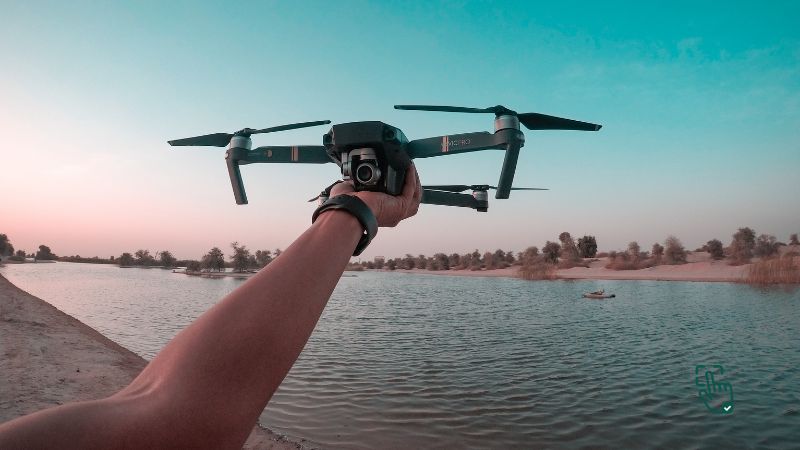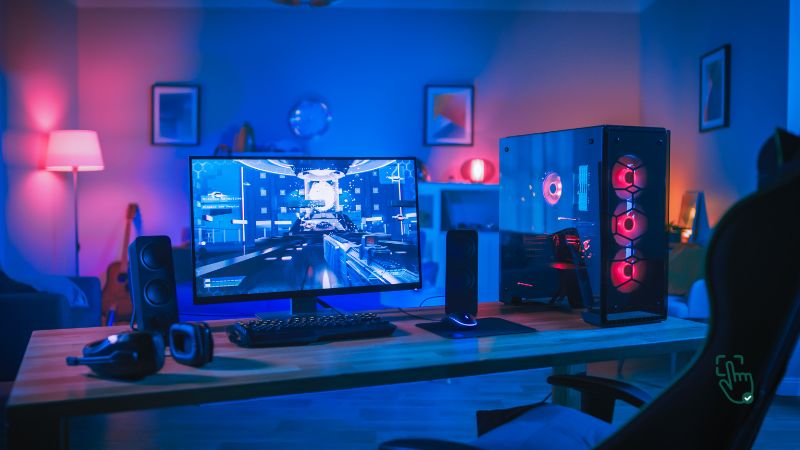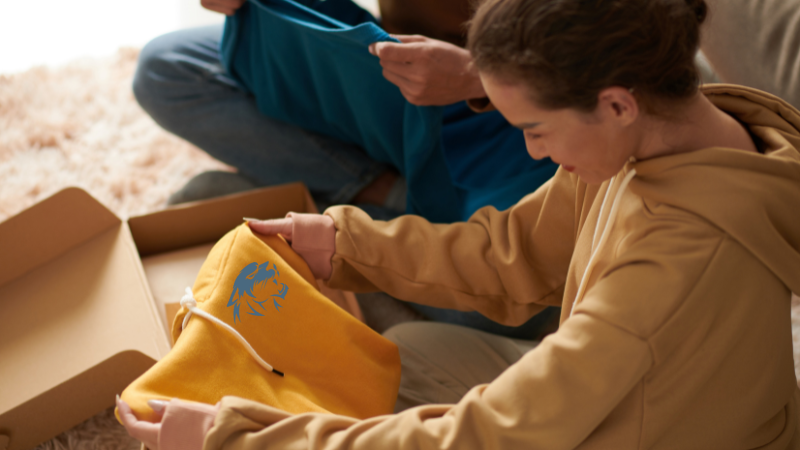
Ever dreamed of capturing jaw-dropping aerial shots like a pro—without needing a Hollywood budget? The Best Camera Drone is the game-changing gadget everyone’s raving about in 2024. Whether you’re a professional photographer, a content creator building your brand, or just a tech-savvy adventurer, camera drones unlock a whole new level of creative freedom. From sweeping 4K landscapes to ultra-smooth cinematic footage, these flying marvels are built to impress.
But here’s the kicker—there are so many drones on the market, and not all of them are worth your time (or money). That’s why we’ve done the digging for you. In this guide, we’ll break down the top camera drones of 2024 and what makes them stand out—so you can pick the perfect one without second-guessing your choice.
Why Do You Need a Camera Drone?
Whether you want to capture stunning landscapes, shoot smooth video footage, or just explore the skies, a camera drone can unlock a world of possibilities. But it’s not just about the fun factor—camera drones are incredibly useful for professional photographers, videographers, and even real estate agents. Drones like the DJI Air 2S and Autel EVO Lite+ are making waves for their features and ease of use, but is one really better than the other? Let’s find out!
Best Camera Drones of 2024
Disclosure: Pick Out Right contains affiliate links. If you purchase through these links, we may earn a commission at no extra cost to you. This helps support our work. Thank you!
1. DJI Air 2S
Alright, if you’re serious about camera drones but don’t want to lug around a beast, the DJI Air 2S is your best buddy. It hits the sweet spot between pro-level quality and travel-friendly design. The highlight? That juicy 1-inch sensor that lets you shoot in glorious 5.4K—yep, that’s cinematic-level crispness. Whether you’re filming scenic trails, cityscapes, or just messing around in the backyard, this drone’s got your back. And because it’s DJI, the build quality is top-notch. Super smooth footage, intelligent flight modes, and solid GPS stability make it a blast to fly. Plus, it’s compact enough to throw in your backpack without needing a separate suitcase.
But hey, no drone is perfect. The obstacle avoidance is a bit limited—mainly front, back, and bottom. So, if you’re planning to zip it sideways through a forest, be extra careful. Battery life? Around 31 minutes, which is respectable but not class-leading. Still, it’s enough to get plenty of epic shots. This drone is ideal for intermediate users or even pros who want a secondary travel drone that doesn’t skimp on camera quality.
Related Products: DJI Air 3, DJI Mavic Air 2, Autel Robotics EVO Nano+
2. Autel EVO Lite+
Now if low-light shooting is your thing or you just love vibrant, rich colors in your aerial shots, the Autel EVO Lite+ is worth a serious look. This drone is no slouch—it boasts up to 40 minutes of flight time (yes, really), and the low-light performance is just killer thanks to the 1-inch CMOS sensor. It’s great for golden hour shots, nightscapes, and anything that needs a little extra light magic. You can crank out some really cinematic footage without too much post-editing.
It does weigh more than some of its competitors, so portability takes a bit of a hit. But for what it offers, the trade-off is pretty fair. You’ll also get smart flight features like dynamic tracking and obstacle sensing, though it’s not quite as polished in autonomous flight as something like the Skydio 2+. Build-wise, it feels premium, and it flies like a dream—smooth controls and quick responsiveness.
Bottom line? The EVO Lite+ is ideal for creators who want high-end performance without the DJI price tag or ecosystem. It’s super underrated and deserves more hype.
Related Products: Autel EVO II Pro, DJI Air 2S, Holy Stone HS720G
3. DJI Mini 3 Pro
If you’re just getting into drones or want something that won’t stress you out when flying, the DJI Mini 3 Pro is the move. This thing is featherlight—just 249g—which means it dodges FAA registration (in the US), and it’s ridiculously easy to carry around. Don’t let the size fool you, though. It shoots stunning 4K video, and the gimbal stabilization is crazy smooth. It’s practically a vlog drone that fits in your hoodie pocket.
The UI and flight control are super beginner-friendly. Plus, you’ve got cool features like True Vertical Shooting (hello TikTok and Insta Reels lovers), and obstacle sensors—oh wait, actually, scratch that, it doesn’t have full obstacle avoidance. That’s the one downside. So yeah, you’ll need to fly smart and be extra cautious when near trees or buildings.
All that said, it’s easily one of the most powerful lightweight drones on the market. Perfect for hobbyists, travelers, and social content creators who want pro-like quality without breaking the bank—or their backs.
Related Products: DJI Mini 2 SE, DJI Mini 4 Pro, Ryze Tello Boost Combo
4. Skydio 2+
Now here’s a drone that’s basically smarter than half the people I know (kidding… kinda). The Skydio 2+ is built for autonomous flying like no other. It’s got some of the most advanced obstacle avoidance tech you’ll find—like, it can literally weave through trees without your help. For creators who want to be in front of the camera (think action sports, travel vlogs, etc.), this drone is a game-changer. It can follow you while you skateboard, bike, or hike without crashing into stuff.
Image quality? Super solid—4K at 60fps with HDR. But it’s not really a competitor to the Mavic 3 in terms of raw camera power. It’s more about the flying experience. The Skydio 2+ isn’t exactly compact either, and the price tag leans towards premium territory. So, you’re definitely investing in AI flight smarts more than portability or pro-level video specs.
Still, for people who film solo and want epic drone shots without needing a second person as a pilot, this is a dream machine.
Related Products: Skydio X2, DJI Air 2S, Parrot Anafi USA
5. DJI Mavic 3
And now we’ve reached the top of the drone food chain. The DJI Mavic 3 is straight-up beast mode. If you’re a professional filmmaker or photographer and want the best aerial shots money can buy, this is where you look. Dual-camera setup with a 20MP wide-angle lens and a 12MP telephoto? Yes, please. Plus, a monstrous 46-minute flight time—almost double what you get from entry-level drones. It’s a whole aerial cinema rig in your backpack.
The obstacle avoidance is 360-degree, super smart, and responsive. Battery life is legendary, and you’ve got all the high-end features you’d expect—like omnidirectional sensing, advanced RTH, and intelligent flight modes. But yeah, this thing costs a pretty penny, so it’s not exactly your casual weekend flyer.
It’s a powerhouse meant for creators and pros who demand the best. If you’re shooting documentaries, real estate videos, or cinematic projects, this drone is worth every dime.
Related Products: DJI Inspire 2, Autel EVO II Pro 6K, DJI Air 3
How to Choose the Best Camera Drone for You
When picking the best camera drone, consider these factors:
- Camera Quality
- The camera is the most crucial element. Look for drones with larger sensors (like the DJI Air 2S) if high image quality is a priority, especially in low-light conditions.
- Flight Time
- Longer flight times allow you to capture more footage without having to stop and recharge. Drones like the Autel EVO Lite+ offer up to 40 minutes, giving you plenty of time in the air.
- Obstacle Avoidance
- If you’re a beginner or planning to fly in tight spaces, obstacle avoidance is a must. Drones like the Skydio 2+ come with some of the best autonomous flying and obstacle avoidance capabilities.
- Portability
- If you’re always on the go, portability is key. The DJI Mini 3 Pro is perfect for travelers who want something lightweight and easy to carry.
Where to Buy the Best Camera Drones
You can buy camera drones from various retailers, but it’s best to go with reputable sources. Check out brands like DJI, Autel, and Skydio on their official websites or trusted retailers like Amazon, B&H Photo Video, or Best Buy. Be sure to look for warranty options and customer support, especially if you’re investing in a higher-end model.
When’s the Best Time to Use a Camera Drone?
Whether you’re a professional filmmaker or just a drone enthusiast, there’s never a wrong time to fly a drone. However, using your camera drone during golden hour (just after sunrise or before sunset) will give you the most stunning shots. For those in it for fun, any clear day is perfect for taking your drone for a spin and capturing unique aerial footage.
The Downsides of Camera Drones: Honest Reviews
While drones are amazing for aerial photography, they’re not without their flaws:
- Battery Life: Even though many drones have extended flight times, most will only last about 30-40 minutes per charge. Make sure you have extra batteries if you plan to fly for longer periods.
- Price: High-quality drones like the DJI Mavic 3 can be quite expensive, so be prepared to spend if you’re looking for professional-level features.
- Learning Curve: Drones like the DJI Air 2S are designed for ease of use, but some models, especially those without obstacle avoidance, can be tricky to fly for beginners.
- Weather Sensitivity: Windy or rainy conditions can affect flight stability, so always check the weather before flying!
Conclusion
Which Camera Drone Should You Buy?
If you’re a beginner, go for the DJI Mini 3 Pro or Autel EVO Lite+—they strike a great balance between ease of use and high-quality footage. For professionals looking for the best camera drone, the DJI Mavic 3 is unbeatable with its dual-camera system and long flight time. However, if obstacle avoidance and autonomous flying are your top priorities, the Skydio 2+ is your best bet.
Got a great photography business idea and need the perfect name? Visit Startup Names for inspiration!



